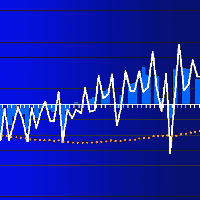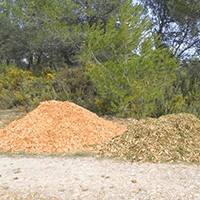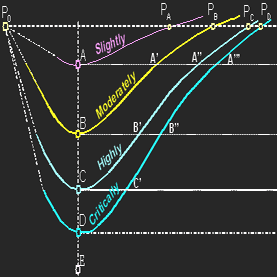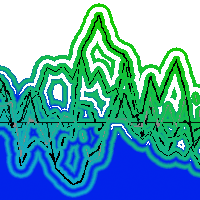
Carbon neutrality of forest biomass for bioenergy: a scoping review
Egor Selivanov (1-2), Pavel Cudlín (1), Petr Horáček (3)
iForest - Biogeosciences and Forestry, Volume 16, Issue 2, Pages 70-77 (2023)
doi: https://doi.org/10.3832/ifor4160-015
Published: Mar 05, 2023 - Copyright © 2023 SISEF
Review Papers
Abstract
The exploitation of forest biomass for bioenergy is commonly perceived as part of a broad strategy for climate change mitigation due to the view that forest biomass is carbon neutral. The aims of this study are to distinguish the most widely used definition of carbon neutrality and to identify the most frequently discussed aspects of the concept of carbon neutrality. This research is conducted in the form of a scoping review. The results of the scoping review demonstrated that there is no generally accepted definition of carbon neutrality. Eight main concepts of carbon neutrality were identified. The most frequently discussed aspects of the carbon neutrality concept were temporal and spatial boundaries, scenario-based assumptions, and the source of biomass feedstock. This research provides a comprehensive summary of the concept of carbon neutrality and contributes to the debate regarding forest biomass exploitation for bioenergy.
Keywords
Bioenergy, Biofuels, Carbon Cycle, Climate Change, Forest Residues, Life Cycle Assessment
Authors’ Info
Authors’ address
Pavel Cudlín 0000-0003-1464-5160
Department of Ecosystem Functional Analysis of the Landscape, Global Change Research Institute CAS, Belidla 986/4a, 603 00, Brno (Czech Republic)
Department of Forest Ecology, Faculty of Forestry and Wood Technology, Mendel University in Brno, Zemedelska 3, 613 00, Brno (Czech Republic)
Department of Xylogenesis and Biomass Allocation, Global Change Research Institute CAS, Belidla 986/4a, 603 00, Brno (Czech Republic)
Corresponding author
Paper Info
Citation
Selivanov E, Cudlín P, Horáček P (2023). Carbon neutrality of forest biomass for bioenergy: a scoping review. iForest 16: 70-77. - doi: 10.3832/ifor4160-015
Academic Editor
Giorgio Alberti
Paper history
Received: Jun 17, 2022
Accepted: Dec 10, 2022
First online: Mar 05, 2023
Publication Date: Apr 30, 2023
Publication Time: 2.83 months
Copyright Information
© SISEF - The Italian Society of Silviculture and Forest Ecology 2023
Open Access
This article is distributed under the terms of the Creative Commons Attribution-Non Commercial 4.0 International (https://creativecommons.org/licenses/by-nc/4.0/), which permits unrestricted use, distribution, and reproduction in any medium, provided you give appropriate credit to the original author(s) and the source, provide a link to the Creative Commons license, and indicate if changes were made.
Web Metrics
Breakdown by View Type
Article Usage
Total Article Views: 30060
(from publication date up to now)
Breakdown by View Type
HTML Page Views: 23974
Abstract Page Views: 3475
PDF Downloads: 2196
Citation/Reference Downloads: 13
XML Downloads: 402
Web Metrics
Days since publication: 1016
Overall contacts: 30060
Avg. contacts per week: 207.11
Citation Metrics
Article Citations
Article citations are based on data periodically collected from the Clarivate Web of Science web site
(last update: Mar 2025)
Total number of cites (since 2023): 3
Average cites per year: 1.00
Publication Metrics
by Dimensions ©
Articles citing this article
List of the papers citing this article based on CrossRef Cited-by.
References
Is biopower carbon neutral? Congressional Research Service, Washington, DC, USA, pp. 12.
Gscholar
Directive 2009/28/EC of the European parliament and of the council of 23 April 2009 on the promotion of the use of energy from renewable sources and amending and subsequently repealing Directives 2001/77/EC and 2003/30/EC. Official Journal of the European Union, Brussel, Belgium.
Online | Gscholar
Recommendations on biomass carbon neutrality. World Business Council for Sustainable Development, Forest Solutions Group - FSG, Geneva, Switzerland, pp. 30.
Gscholar
Correcting a fundamental error in greenhouse gas accounting related to bioenergy. Energy Policy 45: 18-23.
CrossRef | Gscholar
Climate change 2014: synthesis report. In: “Contribution of Working Groups I, II and III to the Fifth Assessment Report” (Pachauri RK, Meyer LA eds). Intergovernmental Panel on Climate Change - IPCC, Geneva, Switzerland, pp. 151.
Gscholar
Climate change 2022: impacts, adaptation, and vulnerability. Contribution of Working Group II to the Sixth Assessment Report of the Intergovernmental Panel on Climate Change (Pörtner H-O, Roberts DC, Tignor M, Poloczanska ES, Mintenbeck K, Alegría A, Craig M, Langsdorf S, Löschke S, Möller V, Okem A, Rama B eds). Cambridge University Press, Cambridge, UK and New York, NY, USA, pp. 3056.
Gscholar
ISO 14044:2006 environmental management - life cycle assessment - principles and framework. International Organization for Standardization - ISO, London, UK, pp. 20.
Gscholar
Meta-issues related to carbon footprint of biomass used for energy production. Working paper, Oregon Department of Environmental Quality, The Regulatory Assistance Project, Montpelier, VT, USA, pp. 19.
Gscholar
Carbon impacts of biomass consumed in the EU: supplementary analysis and interpretation for the European Climate Foundation. The Research Agency of the Forestry Commission, Cheadle Heath, Cheshire, UK, pp. 61.
Gscholar
Massachusetts biomass sustainability and carbon policy study. Report to the Commonwealth of Massachusetts Department of Energy Resources (Walker T ed). Manomet Center for Conservation Sciences - MCCS, Natural Capital Initiative, Brunswick, ME, USA, pp. 182.
Gscholar
Sustainability issues of using forests as a bioenergy resource. In: “What Science Can Tell Us 4 - Forest Bioenergy for Europe” (Pelkonen P, Mustonen M, Asikainen A, Egnell G, Kant P, Leduc S, Pettenella D eds). European Forest Institute, Joensuu, Finland, pp. 90-97.
Gscholar
A review of biomass carbon accounting methods and implications. Technical Bulletin no. 1015, National Council for Air and Stream Improvement - NCASI, Research Triangle Park, NC, USA, pp. 33.
Gscholar
Serious mismatches continue between science and policy in forest bioenergy. Global Change Biology 11 (11): 1256-1263.
CrossRef | Gscholar
PRISMA extension for scoping reviews (PRISMA-ScR): checklist and explanation. Annals of Internal Medicine 169 (7): 467-473.
CrossRef | Gscholar
The upfront carbon debt of bioenergy. European Federation for Transport and Environment, Graz, Austria, pp. 54.
Gscholar

















